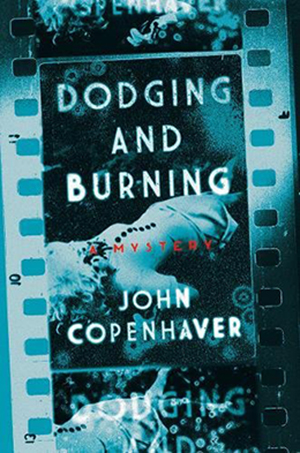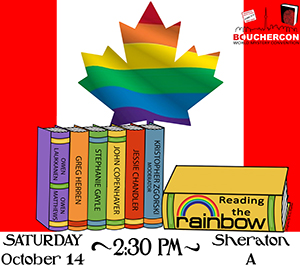From the Booking Desk:
I almost never talk about a book I have read when the release date is six months away – and certainly not here on BOLO Books. But today I am making an exception for a number of reasons: 1. This book is so special that I hope readers will get their pre-orders in as soon as possible, 2. The author is part of my upcoming Bouchercon panel, so I consider it an opportunity to advertise for that event, and 3. I just can’t stop thinking about this novel.
On the widest possible level, John Copenhaver’s Dodging and Burning is crime fiction featuring LGBTQ+ themes, however to pigeonhole it as simply that is to vastly under-appreciate this fine novel. Dodging and Burning is a historical novel depicting the coming-of-age of several different characters during a time when their moments of self-discovery clash with the ideologies of the larger community. By juxtaposing the harsh realities of life in 1945 (as World War II comes to an end) with the innocence of the two main female characters, Copenhaver is able to elucidate the emotions involved when childhood fantasy collides with unvarnished reality. The fallacy of the perfect youthful romance – of all permutations – is shattered as the ominous winds of maturity sweep through and taint each character in different ways. Furthermore, the decision to have the majority of the novel unravel in retrospect allows the author to interject some important insights that would only have become evident with the passage of time.
 This manipulation of the timeline allows for past, present, and future to weave themselves together into a whole-cloth tapestry in which the removal of any one thread would unspool the entire design. Even though Dodging and Burning features two alternating narratives voices – those of the two girls, Bunny Prescott and Ceola Bliss – it is really the story of four people and the society they inhabit. Readers learn about Jay Greenwood solely through the differing eyes of each female narrator. It is another skillful move on the author’s part to have the final corner of this structural foundation remain the most elusive. Robbie Bliss – who left for war, never to return – is brought to life via memory, diary, and dime-store pulp writings. Not unlike the photographs that play such a crucial role in the story, interpretation of events and actions are filtered through the eyes of the beholder – and further analyzed by the reader, who remains on the outside looking in.
This manipulation of the timeline allows for past, present, and future to weave themselves together into a whole-cloth tapestry in which the removal of any one thread would unspool the entire design. Even though Dodging and Burning features two alternating narratives voices – those of the two girls, Bunny Prescott and Ceola Bliss – it is really the story of four people and the society they inhabit. Readers learn about Jay Greenwood solely through the differing eyes of each female narrator. It is another skillful move on the author’s part to have the final corner of this structural foundation remain the most elusive. Robbie Bliss – who left for war, never to return – is brought to life via memory, diary, and dime-store pulp writings. Not unlike the photographs that play such a crucial role in the story, interpretation of events and actions are filtered through the eyes of the beholder – and further analyzed by the reader, who remains on the outside looking in.
That Dodging and Burning is essentially a crime novel cannot be ignored. The questions of who killed Lily Vellum and why her body disappeared after Jay took a photograph of it carry the narrative forward with many dramatic shifts before the truth is ultimately revealed; but there is so much more knowledge to be gleaned from watching the evolution of these characters as history swirls around them. As is so often true in real life, no one comes out unscathed. Fans of the pulp writings of that era will delight in finding the novel’s progression occasionally interrupted (or is it enhanced?) by a story from one such pulp publication – designed and typeset very cleverly by Pegasus Books.
Pre-order Links: Dodging and Burning by John Copenhaver (out March 6, 2018 from Pegasus Books)
From the Booking Desk:
I will say a bit more about voice and tone when I run the true review of Dodging and Burning here on the blog next year, but I hope this sampling has intrigued you enough to follow the pre-order links above. And I hope that if you are at Bouchercon 2017 in Toronto, you will join all my wonderful panelists and myself as we discuss the state of LGBTQ+ representation in crime fiction. Along with John Copenhaver, this panel features Jessie Chandler, Stephanie Gayle, Greg Herren, and Owen Laukkanen (aka Owen Matthews).

______________________________________________________________________
Disclaimer: A copy of this title were provided to BOLO Books by the publisher. No review was promised and the above is an unbiased review of the novel.

Sounds quite intriguing, Kristopher!